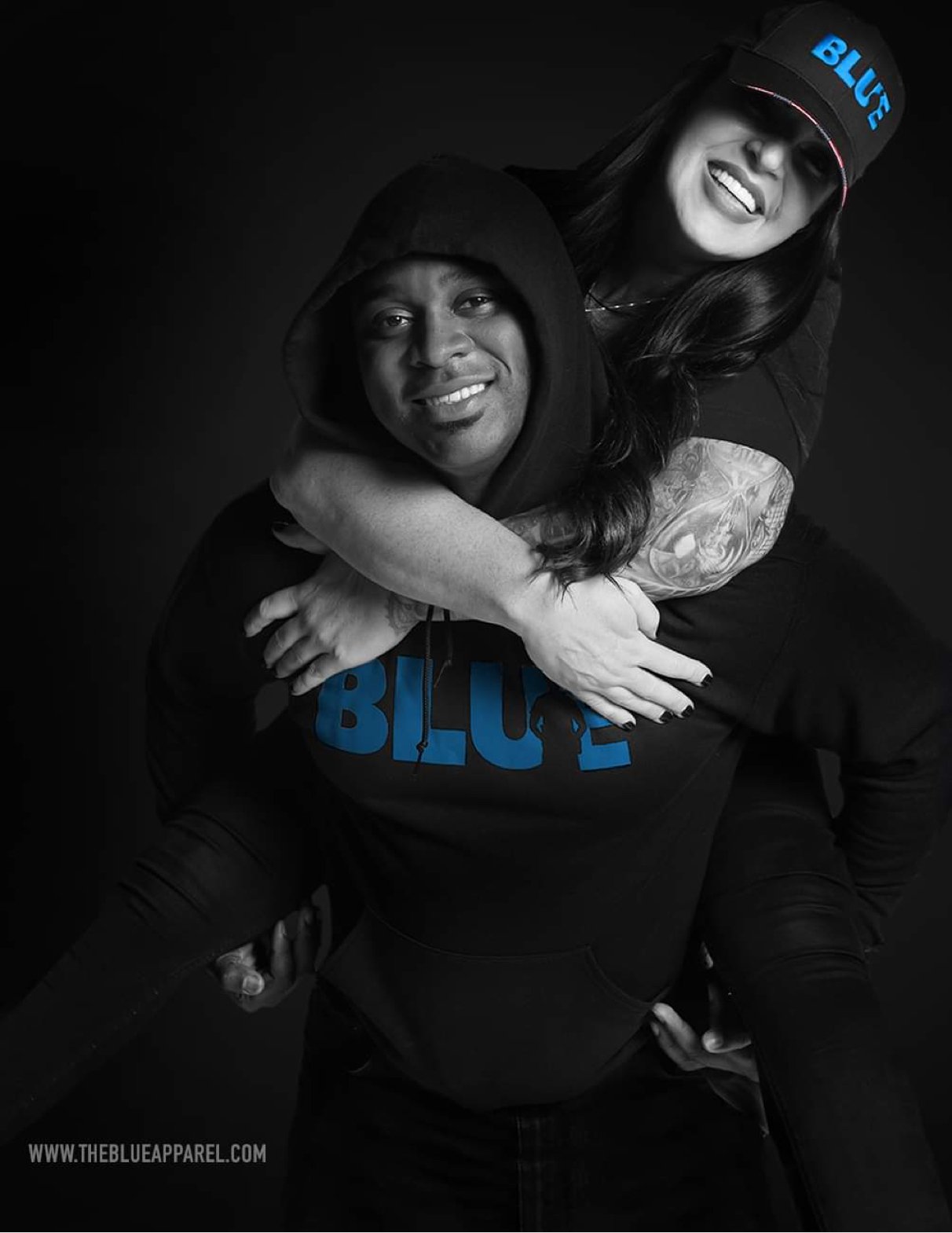POLICE K-9 PARTNERS: The Largely Unsung Heroes of Law Enforcement
/POLICE K-9 PARTNERS: Law Enforcement’s Unsung Heroes
By Marcelo Hagopian and the BLUE Magazine Staff
K-9 Police Prayer and Bible Verse
I will lay down my life for you and expect nothing but love in return.
I will protect my officer with my life, and would gladly take a bullet in his place.
I am sent in to find lost children and fugitives on the run.
I find drugs and weapons and even bombs.
I am the first sent in and sometimes the last to leave.
I am the nose and ears of my officer.
I protect and serve him.
I would die for him and for you.
I only ask for compassion and a kind word.
“Be strong and courageous, for the Lord will be with you wherever you go” - JOSHUA 1:9
A police officer and their K-9 partner share a special bond of trust and friendship. It is a bond that is based on loyalty, respect, and commitment to one other. The officer must trust the K-9 to perform their duties in the best way possible, while the K-9 must trust their handler to provide them with strong direction and support. This bond is essential for both parties ensuring that they are able to work together in a safe manner.
The relationship between a police officer and their K-9 partner begins with basic training. During this time, officers learn how to properly handle their canine companion, as well as how to read the dog’s body language. This helps establish a mutual understanding between the two so that they can work together seamlessly in any situation.
Dog’s have an uncanny olfactory sense, possessing up to 300 million olfactory receptors in their noses as compared to about six million in humans. Being attracted to new and interesting odors, once detected, a part of a dog’s brain is devoted to analyzing smells 40 times greater than humans. Every drug, person, arson accelerant, explosive or other target for locating has a unique scent.
Bergen County NJ Sheriff Office K9 trainer Officer Marcelo Hagopian has been with the Bergen County Sheriff Office for 22 years and is assigned to its training division. He told Blue Magazine, so a towel that smells like cocaine, for instance, becomes the dog’s new toy in training. So you throw the towel, the dog brings it back. You play with the dog, you throw the towel, and the dog brings it back. You play with the dog. You do that about a thousand times. Then eventually you hide the towel. Now the dog can't see the towel. Well, he can smell it and he knows it's under the bed and he's got to go under the bed to get it. So when he starts to scratch towards the bed because he can't get it and they don't scratch, you teach them. You reward them with another towel. So he goes, oh, look. The dog thinks to himself, if I scratch where my toy is, the toy appears. So you play with that towel that appears, and then you throw that towel and you hide it again.
Then eventually you take that towel out and you hide the source. You would hide cocaine, let's say, in a dresser, in a bedroom. You can't get to it, but he can scratch through it. So now you give him the word to search. Because, every time you throw that towel you tell them search or find it, whatever the case may be. It comes to the dresser. He smells what he thinks is his towel because this seems like cocaine, but its actual cocaine. He'll start to scratch at the cabinet. So here comes a towel and appears right at the cabinet. So he goes, oh, I scratched out the cabinet where the toy was and it automatically appeared. So now every time these searches and he knows cocaine, he's going to scratch at it. So now you take another towel that you throw as a reward. The only thing he gets is the odor. He doesn't get the drug itself. They'll never come in contact with it. And that's how it's done. And then you do the same thing for explosives. You do the same thing for arson. Everything's a play for the dog. Everything's a play. And the dog works to please you. He just wants to please you. So, when he does a good job, he gets rewarded.
Once the initial training is complete, the bond between an officer and their K-9 only grows stronger over time. As they continue to work together on more difficult tasks, they learn to appreciate each other’s strengths to a greater level. Officers also come to rely on their canine partner’s unique skill set when it comes to search-and-rescue operations or crime scene investigations.
Officer Marcelo Hagopian further spoke to Blue Magazine on breeds of dogs often utilized for police work and the logic behind it. If an aggressive dog is needed that's going to track criminals, usually used are German Shepherds or the Belgian Malinois. They're very aggressive dogs. They're very powerful dogs. So that's mostly for people that have experience with dogs. German Shepherds are more of a companion, but when they need to perform, they will perform. For criminal apprehension, let's say. But then you can get into Labs for more passive work. So if you go to the airport, you see Port Authority has a lot of Labs. They'll use it for explosives or for air sniffs of individuals where it doesn't engage. It's not aggressive and it doesn't bite. So if you see somebody at the airport walking with the Lab, that dog's indication if he sniffs some kind of explosives on an individual is going to be a sin. So if that dog sits by individual, he's kind of indicating that there's a presence of odor of explosives nearby where a German Shepherd or a Belgian, when they indicate for either they could also be used for explosives and narcotics. They're more aggressive. Sometimes they're taught to scratch at the source for narcotics, explosives. You don't want scratching because obviously it's a bomb. You don't want it to be touched.
We also use a German Shorthaired Pointer. Those are almost like a hunting dog. They're like bird dogs. The military started using them a lot for explosives. We've tried it. We have one that detects arson. And then you can get into your Bloodhounds. That's more for tracking suspects. Or let's say, more of lost parties. Because if a Bloodhound gets to you and you're a bank robber, he's not going to bite you. He's probably going to lick you to death. So they'll use that for missing persons. The thing about Bloodhounds is that they can pick up scent that's ten hours old, a day old, and they can still pick it up. So they're totally different work ethics with the Bloodhound.
Officer Hagopian estimates the cost of a police K-9 and equipment at $15,000-$20,000 with an additional investment in police salaries during training and specialized vehicle costs, so agencies that can justify the expense typically make a room in their budgets for the expenditure.
Perhaps you have heard of some famous police K-9’s? According to the Guinness Book of World Records, a golden retriever named Inty (short for Intrepid) has been credited with over 100 arrests and the recovery of more than $63 million worth of narcotics, making him a world record holder.
Then there is the true story of a shelter dog turned K-9 hero depicted in a Netflix movie titled Rescued by Ruby. Ruby, an Australian shepherd and Border Collie mix, ended up in a Rhode Island animal shelter as a puppy because of behavioral problems. Several families adopted her in turn, only for each to return her because she was too difficult and full of pep. Shelter volunteer and dog trainer Patricia Inman repeatedly intervened to keep Ruby from being euthanized. When State Police Cpl. Daniel O'Neil needed a search-and-rescue dog in 2011, and was informed that his department lacked sufficient resources to purchase a police K-9, he was taken by then eight-month-old Ruby's energy and intelligence, and after Inman vouched for her, she was actually trained as a police K-9. In October 2017 a teenage boy got lost for 36-hours while hiking and Ruby succeeded where a human search party failed. She found the boy, who was unconscious and in grave medical condition. He turned out to be Inman's son. Divine intervention? It does not go unnoticed the word Dog is God spelled backward. “Ruby was given a chance at life and ended up saving a life,” the American Humane Hero Dog organization said in a 2018 citation naming her the nation's “Search and Rescue Dog of the Year.”
Police K-9 success stories are plentiful all across the globe. It is not lost on us, however, that because of the dangerous nature of police work, and the willingness of police K-9’s to lay down their own lives for others in a fearless capacity, that not all K-9 careers have a happy albeit a courageous ending.
The bond between a handler and their K-9 partner goes beyond professional collaboration – it is a deep emotional connection. The handler relies on the K-9's acute senses and specialized skills, while the K-9 looks to their handler for guidance and protection. This mutual dependence forms the foundation of their partnership, leading to the successful execution of their duties. It requires dedication from both parties in order for it to be successful, but it also provides immense rewards for both parties. The police canine becomes a part of an officer’s family and officer and K-9 spend more time together than any other members of their family. With a bond of complete trust and respect, officers and their K-9 partners are able to protect each other while working towards a common goal of keeping others safe from harm.
The Blue Magazine is most honored to support the men and woman of police K-9 units everywhere and their brave K-9 partners, Special thanks go out to K-9 handler and trainer Marcelo Hagopian of the Bergen County New Jersey Sheriff’s Office for sharing his own insights and expertise.
































